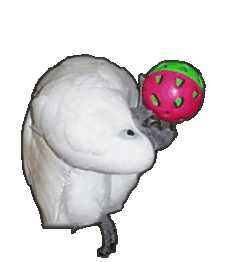Published Jan 11, 2012
I never expected I would care about dung beetles, or that I would even see them on this safari: but, apparently, get a bunch of scarab beetles rolling around and then burying their very own balls of elephant dung, and I can’t hold myself back. They’re just such hard-working little buggers, fighting for their dung, rolling it into a ball, climbing to the top every once in a while to make sure they’re rolling it in the right direction, then finally burying it so that it can incubate the next generation of poo-oriented scarab beetles. Intrepid indeed! So naturally I was on my belly getting photos of them working hard, silhouetted by a gigantic pile of elephant spoor.
Our trip to Ruaha was very much about the little things. Sometimes that was literal, as with the dung beetles, or the swarms of inch-long bullfrogs, or the many-colored dragonflies, or the super-adorable (if unfortunately-named) dikdik.
But it was also about the little matter of the manner in which we appreciated the safari. After Mahale and Manyara, we’d truly seen the vast majority of the incredible animals we’d come to see. Sure, we were hopeful we’d spot leopards or lions or wild dogs, but the reality was that Ruaha would offer mostly the elephants and giraffe and impala that we’d already seen. So we could be bored, or we could go to Ruaha to do something different.
And that was what we did. We stayed in Kwihala Tented Camp, a mobile camp of large, frankly luxurious tents that moves several times a year to stay near the wildlife. But it’s still just a bunch of tents in the bush, and you need an escort from the main lounge tent to your tent at night. All night long you hear the snorts of impala, the low booming of lions, the snuffle of warthogs, sometimes just outside your tent — you feel a bit alone in the middle of Africa, which is great.
All day long — and I mean all day long — we safaried by vehicle. The friendly team woke us up at 5:30 every morning with juice and coffee, then by 6 we were on our way, seeing the park at sunrise. Then we’d stop for tea and a breakfast of fruit, toast, eggs, and bacon at around 9:30, returning for lunch at noon. At 3:30 we’d head out to do it all again, not coming home until the sun was well down, just in time for an 8:30 dinner call.
Exhausting? A bit. An incredible chance to see the animals? Definitely. Our guide Steve found us tons of those great small buggers, and a lot of beautiful birds. But he also found us the good big game. There were elephant just outside our Land Cruiser, real live wild elephant playing and suckling and eating and knocking down trees and walking close enough I could’ve touched them if I were sitting on the hood. We saw young male impala fighting, we learned all about giraffe behavior, and we found a pack of baboons and watched their babies play.
Sure, there was that one time Steve parked us in the middle of a tsetse fly-infested swamp to get a better view of some animals, but I can forgive him that. Because he also found us this incredible lioness. She was old, and injured, and clearly hadn’t eaten for weeks; she was skin and bones, and was hiding in the shade. Anyone could’ve missed her (in fact, others on safari drove past us right after we saw her and didn’t stop). But Steve spied her sleeping, and we waited around, and we saw her get up and walk and saw her limp and understood that was why she was emaciated and used that to understand lion pack behavior.
So that was this part of the vacation: seeing real wild animals in their real habitat acting naturally, and understanding why. There’s not much better reason for a safari than that! Next stop is the Selous (say see-lou), with its famous river boat safaris to see the hippos and crocodiles and its equally famous pool in the midst of camp to cool off in. Which would be great, because it’s hot here. Africa hot, as the locals say.













